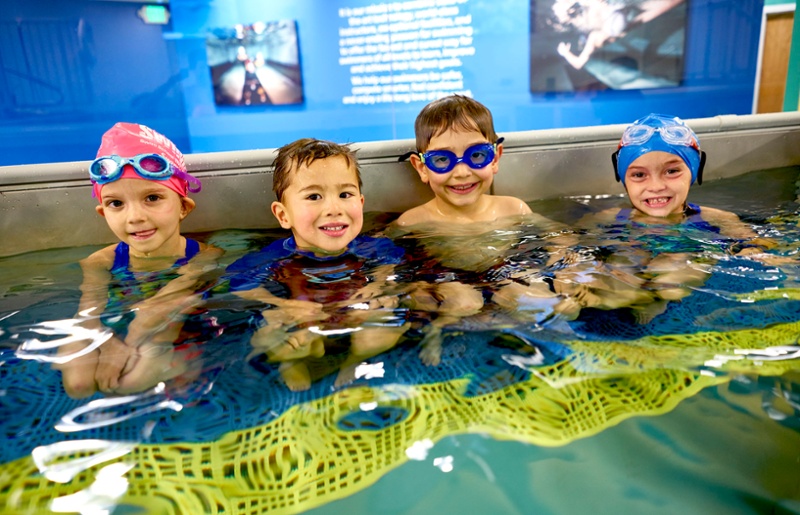At SwimLabs, water safety is not only what we teach, but it’s who we are.
At SwimLabs, we have a passion for swimming and we want all our swimmers to love and respect the water. While we are all about making learning to swim fun, we know learning to swim is a serious matter. Drowning can happen to anyone, any time there is access to water.
Did you know drowning is the leading cause of injury death in U.S. children 1 through 4 years of age? And, for every child who dies from drowning, another five receive emergency department care for nonfatal submersion injuries.
The good news is that there are many precautions you can take to lower the risk for you and your children. That’s why water safety is at the core of our brand. We're committed to teaching people how to stay safe in and around water.
According to the National Institute of Health (NIH) learning to swim can reduce the risk of drowning by up to 88%. Learning to swim is one of the most proactive safety precautions you can take for your family. And, we’re not talking about just the kids. Many times parents are also in need of becoming safer, stronger swimmers.
Right from the beginning, every SwimLabs student learns the basics of water safety and efficient swimming techniques. We believe swimmers need to develop swim skills that not only allow them to float, but to also move themselves to safety as strong and confident swimmers. Having an efficient swim stroke enables swimmers to move themselves out of potentially dangerous situations. With SwimLabs, you'll not only learn to swim, but also gain the confidence to stay safe in the water for a lifetime.
Parents need to watch their baby or toddler carefully near water. Even a small amount of water can be dangerous and cause drowning.
Additional Infant Water Safety Resources:
Unfortunately, more children ages 1 to 4 die from drowning than any other cause, with the majority occurring in swimming pools or hot tubs. Fortunately, there are several steps you can take to keep your kiddos safer in and around the water.
Additional Water Safety for Kids Resources:
Kids ages 15-19 years old have the 2nd highest fatal drowning rate out of any age group. Risk-taking behavior, peer pressure and alcohol use all lead to increased drowning risk during the teen years, even for strong swimmers. To keep your teen safe in and around water, follow these tips:
Additional Teen Water Safety Resources:
Water safety is crucial for everyone, not just children! Make sure you and your family stay safe around water by following these simple precautions:

A team of experienced and passionate world-class swimmers developed the lesson plans we use. From infancy to toddlerhood and beyond, our progressive curriculum empowers your child to become a stronger swimmer.
We believe swimmers should focus on more than just staying afloat—they should also aim to confidently swim to safety. Having efficient strokes and mature safety skills can help swimmers navigate out of dangerous situations. Our swim lesson program includes:

